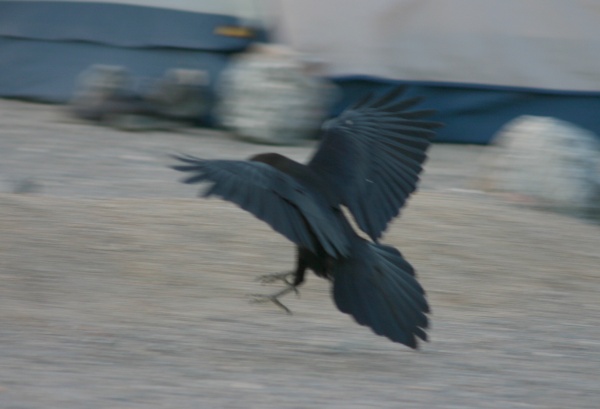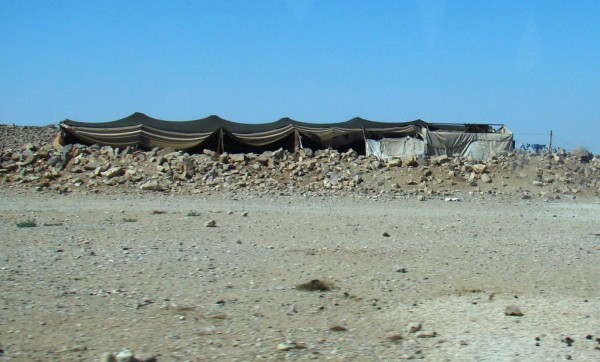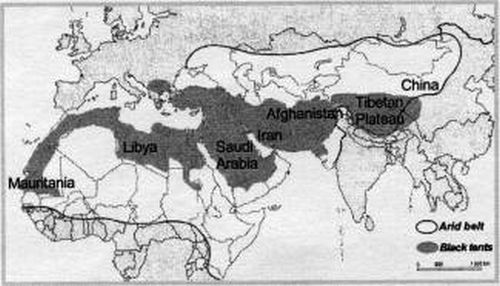
We all know that wearing black is hot in the sun but did you know that it’s cooler than other colors when there’s a breeze?
According to page 154 of Ornithology by Frank B. Gill: “The cooling effects of wind are most pronounced on black feathers, which concentrate solar heat near the surface of the plumage. Black feathers can increase the amount of heat that a bird’s body absorbs from the environment when there is no breeze. A light breeze, however, removes the accumulating surface heat and reduces further penetration of the radiant heat.”
“The black plumage of desert ravens increases convective heat loss, as do the robes and tents of Bedouin tribes in the Sahara.”
Whoa! Black tents! I had no idea people used black tents in the desert. (Obviously I’ve not been paying attention.)

Here’s a photo of a Bedouin tent in Jordan. Notice that the top is black! The cloth is woven from the hair of their black goats.
Use of black tents is not restricted to the Bedouin tribes in the Sahara and Middle East. The color is popular in the middle of the arid lands that stretch from Africa to Asia as shown on this map from The Black Tent in Its Easternmost Distribution: The Case of the Tibetan Plateau by Angela Manderscheid.

People learned that black is cooler in the desert and adapted accordingly.
The raven knew that black was cool long before people found out. His outspread wings look like a black tent.
(photo of a raven landing near a tent in Death Valley National Park via Wikimedia Commons. Photo of a Bedouin tent by Anita Gould, Creative Commons license via Flickr. Click on the images to see the originals. Today’s Tenth Page is inspired by page 154 of Ornithology by Frank B. Gill.)
excerpt link to Afghanistan: An Atlas of Indigenous Domestic Architecture by Albert Szabo, Thomas Jefferson Barfield.